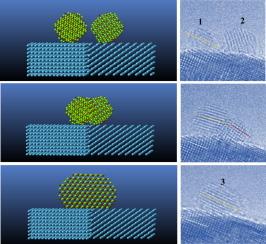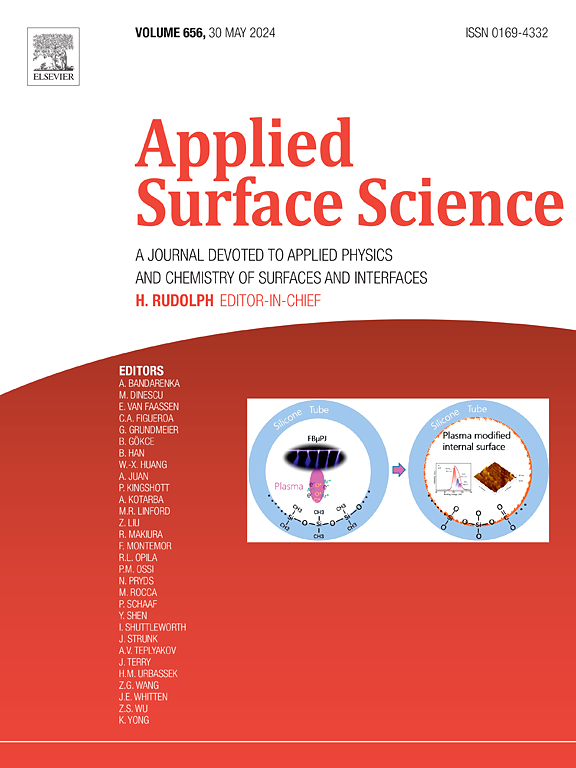Surface structure-dependent nucleation and rotated sintering of an initially oxidized AuCu nanoalloy
IF 6.3
2区 材料科学
Q2 CHEMISTRY, PHYSICAL
引用次数: 0
Abstract
AuCu nanoalloys are typical multicompent catalysts that have been widely used because of their highly reduced cost. The oxidation is a highly common reaction mode during catalysis, in which the material morphology, composition, and surface defects can affect the initiation of oxidation and aggravate the oxidation. The effects of the atomic-scale oxidation process on the adsorption, nucleation and growth of the AuCu nanocrystalline films were observed by in situ environmental transmission electron microscopy. The structural impacts of different types of defects on the oxide nucleation process have been revealed, and the preferred oxidation sequence is surface grain boundaries first, then surface zigzag edges, and, finally, the orderly crystal surface. Such a structural oxidation sequence can be attributed to the coordination number of AuCu nanoalloys, with those with large numbers tending to adsorb more oxygen atoms and preferring to nucleate in this region. Nucleation and growth on the newly formed oxide crystal were disordered, resulting in structural order. The oxidation process prompts oxide particle rotation, and this rotation accelerates the combination of particles. An in situ study of the microstructures of a AuCu alloy subjected to oxidation provides key evidence for studying the failure mechanism of the catalytic properties of nanoalloys.

求助全文
约1分钟内获得全文
求助全文
来源期刊

Applied Surface Science
工程技术-材料科学:膜
CiteScore
12.50
自引率
7.50%
发文量
3393
审稿时长
67 days
期刊介绍:
Applied Surface Science covers topics contributing to a better understanding of surfaces, interfaces, nanostructures and their applications. The journal is concerned with scientific research on the atomic and molecular level of material properties determined with specific surface analytical techniques and/or computational methods, as well as the processing of such structures.
 求助内容:
求助内容: 应助结果提醒方式:
应助结果提醒方式:


